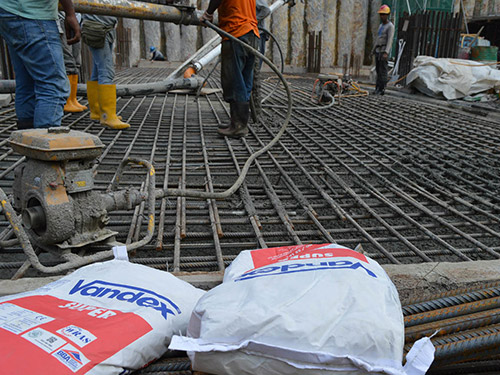Cracks in concrete are quite a common sight. While some cracks are inevitable and not of great concern, some are signs of a larger underlying issue. In this article, we will explore the three main reasons why cracks form in concrete slabs, and the methods we use for managing them.

 What is concrete?
What is concrete?
Concrete is made up of three elements - cement, aggregate, and water. The aggregate in the mixture, usually sand (fine aggregate) or gravel (coarse aggregate), is combined with water via a binding agent - cement. Cement usually comprises of eight key ingredients (which include lime, silica, alumina, magnesia, iron oxide, calcium sulfate, sulfur trioxide, alkaline) that upon contact with water, produces a chemical reaction that hardens and solidifies, producing concrete.
3 main causes of cracks in concrete
1. Drying Shrinkage
Concrete by nature is a porous material. This means that when it is curing, the water in the concrete takes up space. As concrete hardens, it loses its moisture through evaporation resulting in empty capillary pores and a slightly smaller shape. This process is known as drying shrinkage. Since concrete is very rigid, this shrinkage causes an increase in tensile stress, which may lead to, cracking, internal warping, or external deflection.
Concrete cracks when the drying shrinkage stresses exceed the tensile strength (amount of resistance a material can withstand when stretched or pulled) of the concrete. The spacing and size of cracks depend on the amount of shrinkage, degree of restraint, and amount and type of reinforcement. Drying shrinkage is the number one reason for cracks in concrete.

2. Lack of / improper use of control joints
Control joints are most commonly installed in slab on grade concrete that is used in places such as driveways, pavements, house slabs, basement floors, and industrial spaces.
Control joints are generally fitted into the concrete during the finishing process and are placed so that the concrete forms a square or rectangular pattern. Control joints are used to manage the areas in the concrete where cracks may appear. This means that rather than allowing cracks to form at random, which will not be aesthetically pleasing, contractors use control joints to weaken slabs in specific areas and thereby regulating crack formations.
By installing control joints, it allows for movements within the concrete that may be caused by temperature changes or drying shrinkage. In terms of repairs, it is definitely easier and less costly to treat a control joint that numerous random cracks in the concrete.
3. Poor construction practices
Poor construction practices can also lead to the formation of cracks in concrete. Most of the time it comes down to:
- Inadequate curing time
- Insufficient concrete compaction (reduces the density of concrete)
- Adding excessive water to the mixture (increases drying shrinkage)
The mistakes above basically undermine the strength of the concrete, resulting in it being prone to cracking under lower-than-expected tensile stress.
It is the duty of the contractor to follow all the proper application and safety procedures when handling concrete. With the appropriate onsite supervision and trained applicators, such practices can be avoided.
Managing cracks with the
752HP Floor System


 Concrete, Waterproofing and Roofing, Infrastructure
The 5 Main Benefits of Crystalline Waterproofing
Concrete, Waterproofing and Roofing, Infrastructure
The 5 Main Benefits of Crystalline Waterproofing
